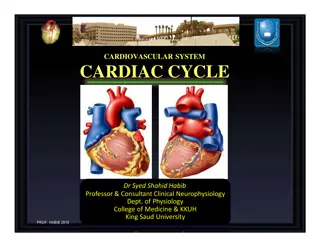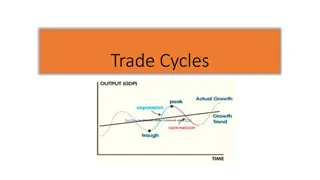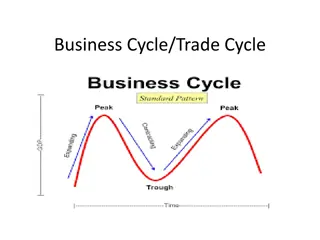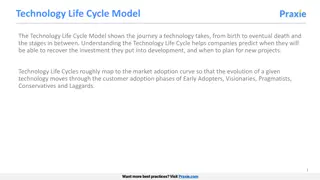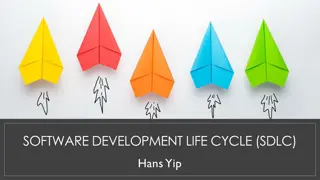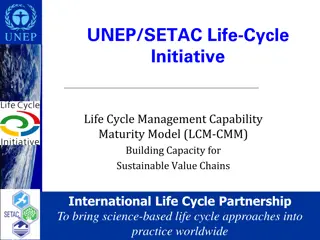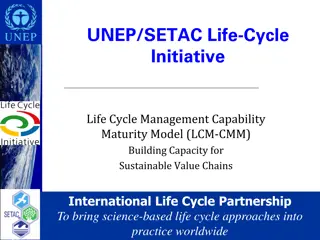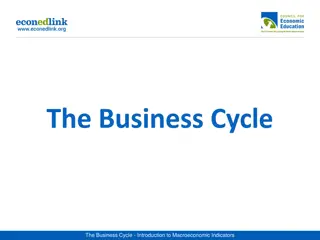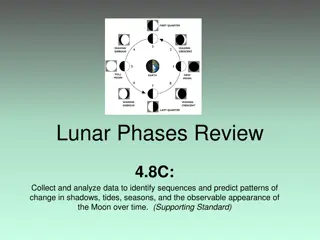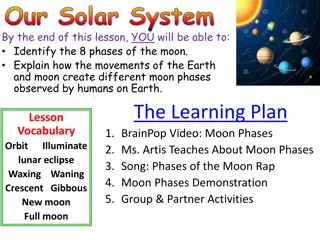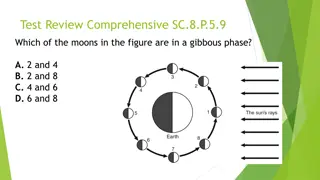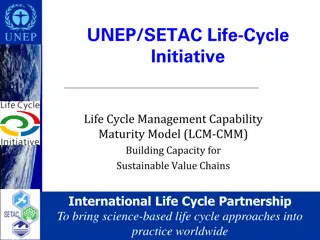Project Management Life Cycle Phases and Importance
Explore the key phases of a project life cycle from initiation to closure, emphasizing the significance of each stage such as planning, executing, monitoring, and controlling. Discover the essential elements like project requirements, scope management, stakeholder influences, and risk management plans that contribute to successful project completion.
Download Presentation

Please find below an Image/Link to download the presentation.
The content on the website is provided AS IS for your information and personal use only. It may not be sold, licensed, or shared on other websites without obtaining consent from the author.If you encounter any issues during the download, it is possible that the publisher has removed the file from their server.
You are allowed to download the files provided on this website for personal or commercial use, subject to the condition that they are used lawfully. All files are the property of their respective owners.
The content on the website is provided AS IS for your information and personal use only. It may not be sold, licensed, or shared on other websites without obtaining consent from the author.
E N D
Presentation Transcript
Initiating Planning Executing Monitoring and controlling Closing
Project Life Cycle Phase 1 Phase 2 Phase 3 Stage Gates Phase 4
Developing the project charter Developing the preliminary project scope statement Developing the project plan Directing and managing the project execution Monitoring and controlling the project Managing integrated change control Closing the project
Project requirements for satisfaction The big picture Project purpose Milestone schedule Stakeholder influences Functional organizations Assumptions Constraints
Defines what the project will accomplish, create, and deliver. Defines the purpose of the project, in detail, so that all stakeholders may share a common understanding of the project.
Project objectives Project deliverable characteristics Acceptance criteria Project boundaries of what s in the project and what will be excluded Constraints and assumptions Initial project risks Milestones The initial work breakdown structure A rough order of magnitude cost estimate A configuration of management requirements Approval requirements
Project Scope Management Plan The Schedule Management Plan The Cost Management Plan The Quality Management Plan The Process Improvement Plan The Staffing Management Plan The Communications Management Plan
The Risk Management Plan The Procurement Management Plan The Milestone List The Resource Calendar Project Baselines The Risk Register
Hierarchical Planning Process begin with project s objectives list major activities needed to achieve objectives (Level 1 Activities) delegate level 1 activities to individuals or functional areas to develop list of Level 2 activities degree of detail should be same within a given level
Project activities identified and arranged in successively finer detail (by levels). Type and quantity of each required resource identified for each activity. Predecessors and durations estimated for each activity. Milestones identified. Individual or group assigned to perform the work identified for all activities.
Question: Eight chocolates are arranged in an antique candy dish. Eight people each take one chocolate. There is one chocolate remaining in the dish. How can that be? Question: How could your pet Yorkie fall from the window of an 18-story building and live?
Definition: the processes to ensure that the project includes all work required, and only the work required, to complete the project successfully It defines what work is needed to complete the project objectives It determines what is included in the project. It serves as a guide to determine what work is not needed to complete the project objectives. It serves as a point of reference for what is not included in the project.
Step 1: Defining the Project Scope Step 2: Establishing Project Priorities Step 3: Creating the Work Breakdown Structure Step 4: Integrating the WBS with the Organization Step 5: Coding the WBS for the Information System
Project Scope A definition of the end result or mission of the project a product or service for the client/customer in specific, tangible, and measurable terms. Purpose of the Scope Statement To clearly define the deliverable(s) for the end user. To focus the project on successful completion of its goals. To be used by the project owner and participants as a planning tool and for measuring project success.
1. Project objective 2. Deliverables 3. Milestones 4. Technical requirements 5. Limits and exclusions 6. Reviews with customer
Scope Statements Also called statements of work (SOW) Project Charter Can contain an expanded version of scope statement A document authorizing the project manager to initiate and lead the project. Scope Creep The tendency for the project scope to expand over time due to changing requirements, specifications, and priorities.
3- 21
Work Breakdown Structure (WBS) An hierarchical outline (map) that identifies the products and work elements involved in a project Defines the relationship of the final deliverable (the project) to its subdeliverables, and in turn, their relationships to work packages Best suited for design and build projects that have tangible outcomes rather than process- oriented projects
FIGURE 4.3 FIGURE 4.3
WBS Facilitates evaluation of cost, time, and technical performance of the organization on a project Provides management with information appropriate to each organizational level Helps in the development of the organization breakdown structure (OBS), which assigns project responsibilities to organizational units and individuals Helps manage plan, schedule, and budget Defines communication channels and assists in coordinating the various project elements
FIGURE 4.4 FIGURE 4.4
A Work Package Is the Lowest Level of the WBS. It is output-oriented in that it: Defines work (what) Identifies time to complete a work package (how long) Identifies a time-phased budget to complete a work package (cost) Identifies resources needed to complete a work package (how much) Identifies a single person responsible for units of work (who)
Gather Project Team Provide Team Members with Pad of Sticky- Notes Team Members Write Down all Tasks They can Think of. Sticky-Notes Placed and Arranged on Wall
Factors to Consider in Assigning Work: Don t always pick the same people for the toughest assignments. Choose people with an eye to fostering their development through participation on the project. Pick people with compatible work habits and personalities but who complement each other. Team-up veterans with new hires to share experience and socialize newcomers into the organization. Select people who may need to learn work together on later stages of the project or other projects.



